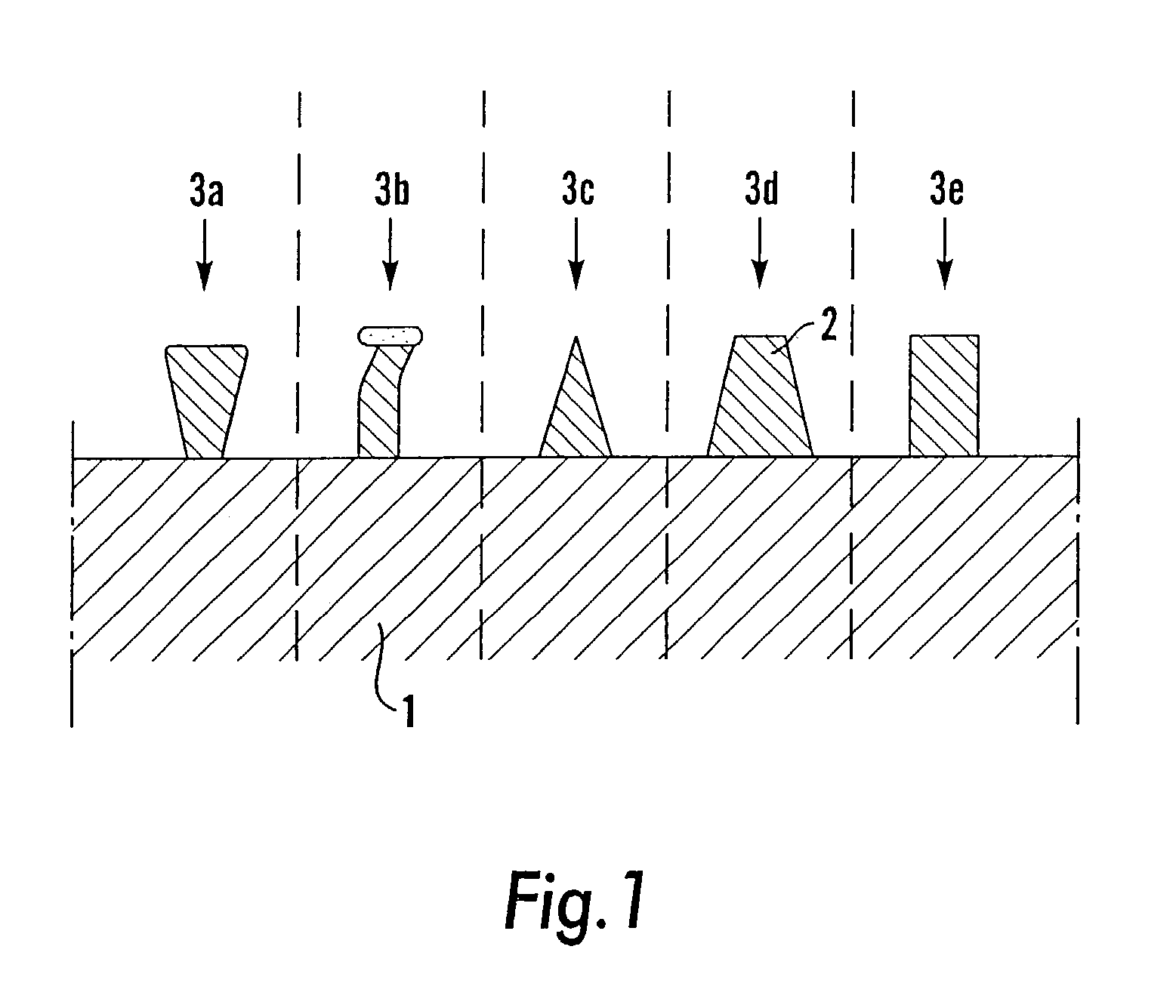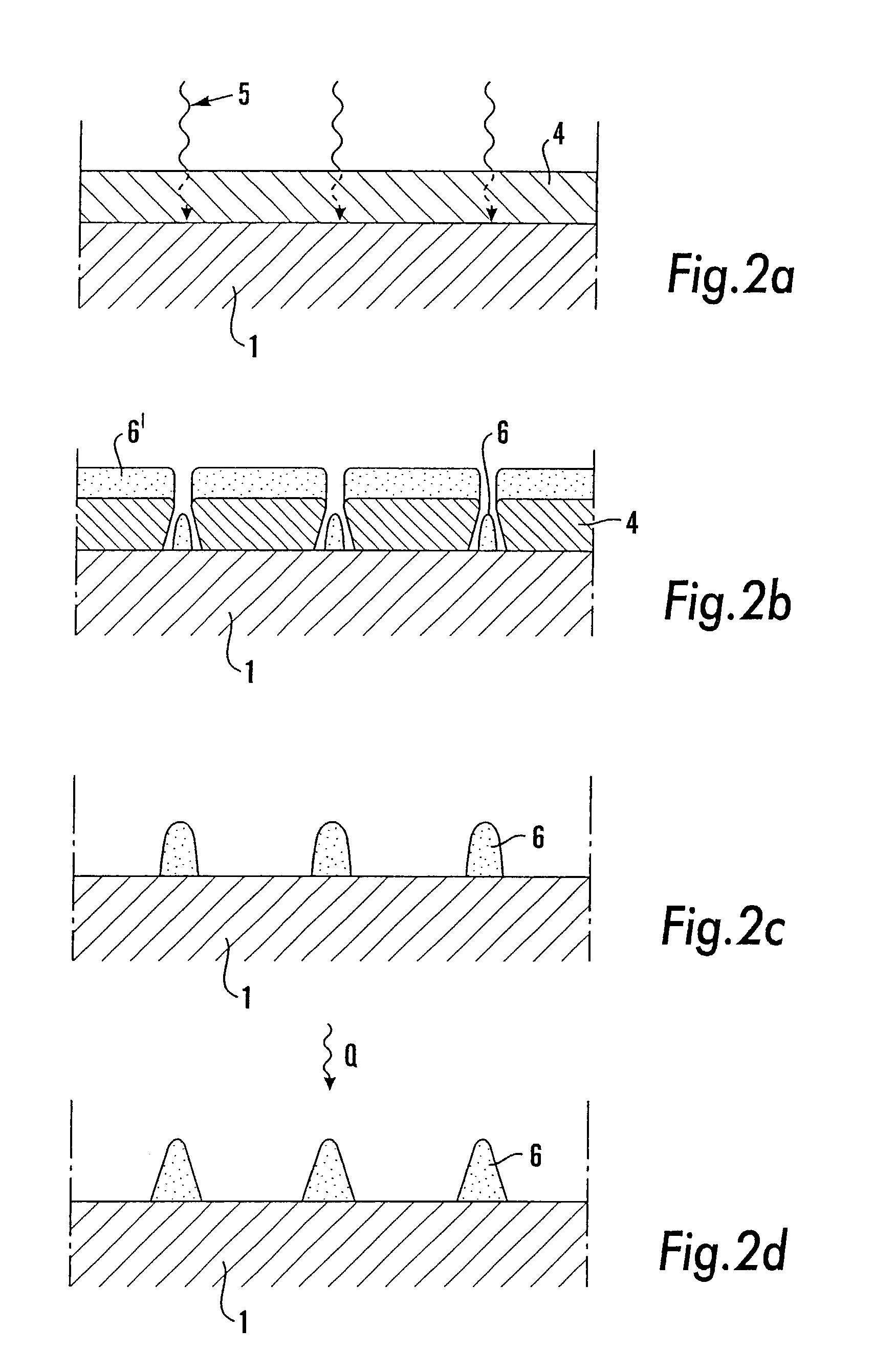Method in connection with the production of a template and the template thus produced
a technology of template and template, which is applied in the field of template production, can solve the problems of difficult to achieve an adequate and even voltage distribution, difficult to produce very small structures, and many steps, and achieve the effects of low cost, small size and simple production process
- Summary
- Abstract
- Description
- Claims
- Application Information
AI Technical Summary
Benefits of technology
Problems solved by technology
Method used
Image
Examples
first embodiment
[0019]FIGS. 2a–d is showing, in cross-section, the process steps for the production of a template according to the invention,
second embodiment
[0020]FIGS. 3a–c is showing, in cross-section, the process steps for the production of a template according to the invention,
[0021]FIGS. 4a–c is showing, in cross-section and a light perspective, SEM pictures of three different templates which have been produced according to the invention.
[0022]In FIG. 1 there is shown, in cross-section, a number of different structural details which may be produced on a template, according to known technique. On a plate 1, there has been produced different imagined structural details 3a–e, of a material 2. Detail no. 3a exhibits a non-beneficial profile, which after imprint in a resist that has been softened by heating and solidified by cooling, on a not shown substrate, risks to get caught in the resist on the substrate. This is also the case for structural detail no. 3b, which has been produced by etching according to the description above of known techniques, and which exhibits a protruding “hat”. The structural details 3c, 3d and possibly even ...
PUM
| Property | Measurement | Unit |
|---|---|---|
| temperature | aaaaa | aaaaa |
| temperature | aaaaa | aaaaa |
| temperature | aaaaa | aaaaa |
Abstract
Description
Claims
Application Information
 Login to View More
Login to View More - R&D
- Intellectual Property
- Life Sciences
- Materials
- Tech Scout
- Unparalleled Data Quality
- Higher Quality Content
- 60% Fewer Hallucinations
Browse by: Latest US Patents, China's latest patents, Technical Efficacy Thesaurus, Application Domain, Technology Topic, Popular Technical Reports.
© 2025 PatSnap. All rights reserved.Legal|Privacy policy|Modern Slavery Act Transparency Statement|Sitemap|About US| Contact US: help@patsnap.com



